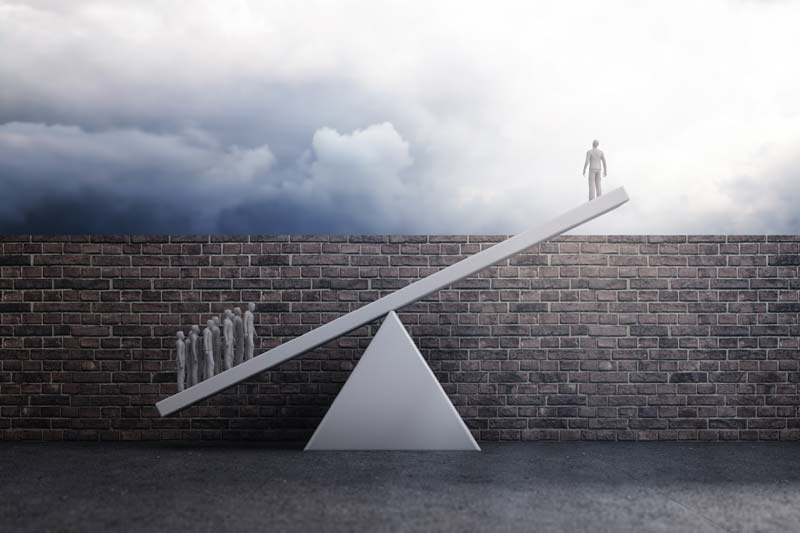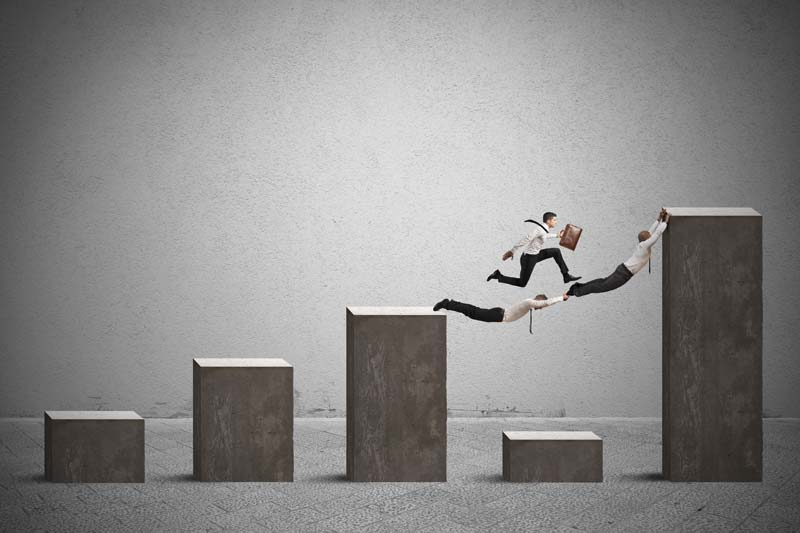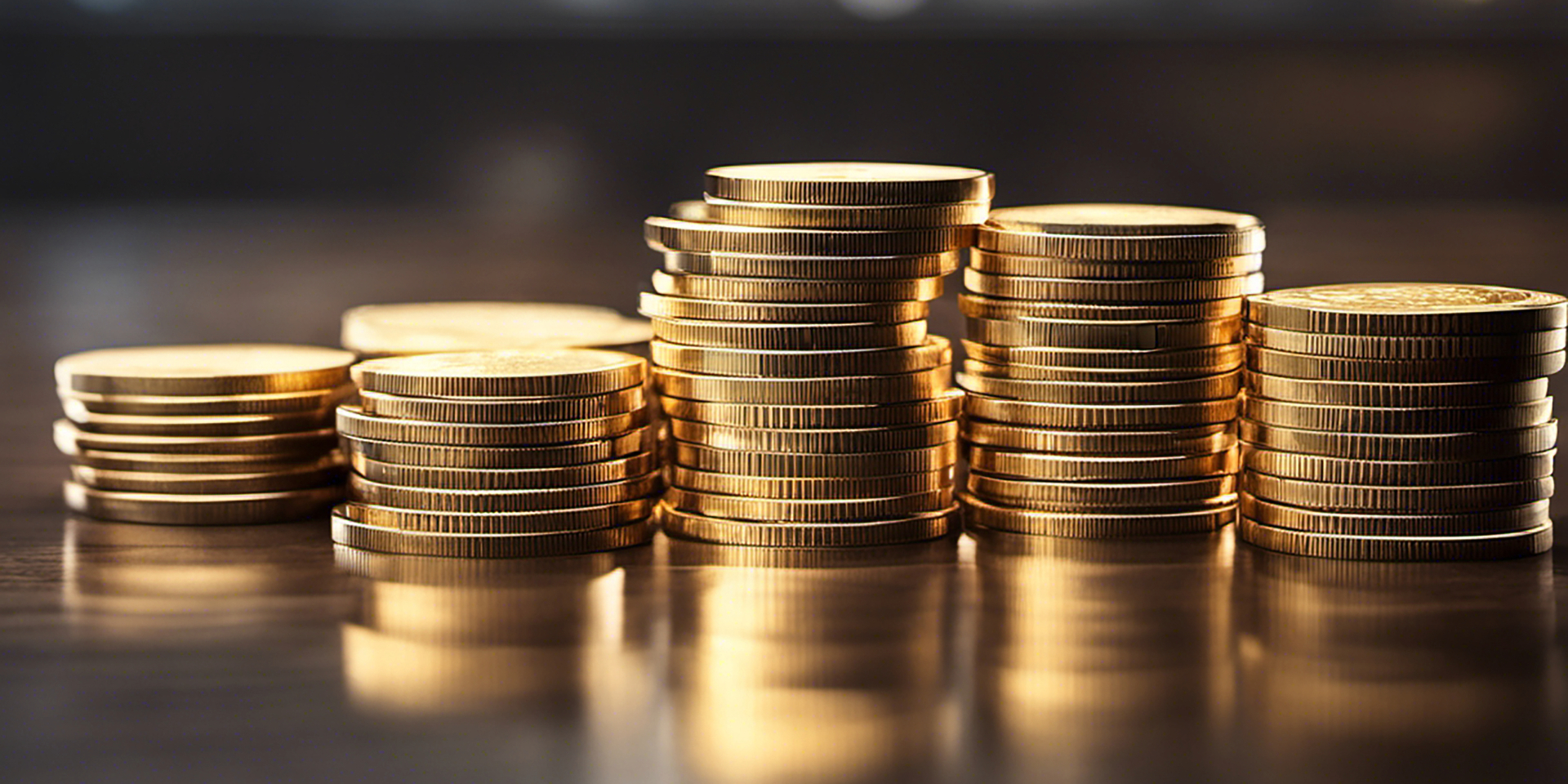Since 2020, the wealth of the world’s five richest people has doubled. Over the same period, almost five billion people in the world have become poorer. Such an absurd expression of equality is, sadly, not unique and shows once again where injustice has reached in a society that thinks it is on the cusp of progress.
The figures themselves are shocking, but the real tragedy lies behind them, in the lives of hundreds of millions of people living in extreme poverty or starvation, while a few accumulate unimaginable wealth.
Trying to explain this is fraught with complex causes, each of which could easily be the subject of an entire book. But for those who want to see the bigger picture, history offers a helping hand.
Nothing new under the sun
From the Roman Empire onwards, history records a cyclical pattern of inequality. Periods of extreme wealth concentration are followed by periods of relatively fairer income distribution. Two of the more recent proponents of this theory are Peter Turchin and Sergey Nefedov, economists who have used mathematical models to demonstrate this cyclicality in different countries for both agrarian and early modern societies[1].
It is important to note that, over time, the end of a cycle has been generated by major economic or political problems, such as financial crises or wars, which have led to special measures by the authorities or special reactions by society.

For example, there was a period of exacerbated growth in inequality between 1800 and 1920, when the gap between rich and poor increased more than 100-fold, before falling between 1920 and 1970 to levels not seen since the mid-19th century. The reasons are easy to see. The Great Depression and the two world wars brought wealth levels closer together, driven by a population decline of over 50 million and measures to limit the uncontrolled growth of wealth among the few. The negative effects of the Industrial Revolution’s redistribution of wealth in favour of the rich were reversed, but the price paid was by no means small.
The roots of inequality
Each cycle of inequality has been unique, and the one we are in now is special because of the variety of factors that have brought us here. However, there are also long-standing factors that have created inequality in the past. So what are the common causes of the cyclical gaps between rich and poor throughout history? One of the first causes is the growth of the labour force. Simply put, when landlords or employers had more people, wages went down, following the principle of “if you’re not happy with this amount of money, I’ve got someone who can replace you straight away”.
In recent decades, globalisation has accelerated this process through the opening up of markets with cheap labour. Factories in China or Bangladesh are all too well known, where the sale of a single product in developed countries can pay a worker’s entire month’s wages, or even less.
The role of globalisation in increasing inequality is constantly debated, because this negative effect is masked by the positive effects for those living in extreme poverty. Some proponents of globalisation argue that without the new jobs, people in poor countries would starve. So while the situation is not ideal, it is better than nothing. The global economy is growing, and so are the survival chances of the poor. Poverty reduction statistics confirm this. Between 1990 and 2014, the prevalence of undernourishment fell by 42%, the proportion of chronically undernourished dropped from 23.4% to 13.5%[2], and the number of people living in extreme poverty fell from 1.9 billion to 836 million. However, there are those who argue that the situation is not analysed as it should be, in terms of what could have been done during this period and the relative impact of globalisation.
As for the eradication of extreme poverty, while the positive effects cannot be denied, a closer look is needed. As many economists are quick to point out, the situation is not as favourable as the statistics suggest. Poverty reduction is discussed in terms of proportions, when a more accurate discussion would be in terms of absolute numbers because of population dynamics. Achieving a target expressed in proportions makes the situation look much rosier than it really is, says Thomas Pogge, Leitner Professor of Philosophy and International Affairs at Yale University. He notes, for example, that the much-hyped Millennium Development Goals were much less ambitious than previous targets set at various development summits, but this was not noticed by many precisely because of the introduction of proportions in the formulation of the goals. In his words, the proposed targets were “grotesquely under ambitious in view of resources available and the magnitude of the catastrophe“.
Another problematic indicator is the subsistence line set by the World Bank at $1.25 per day (changed to $1.9 per day in October 2015), which has been repeatedly challenged, mainly because it excludes from the statistics many who live on very close to this amount and are therefore just as poor, but are considered to be above the poverty line.
As for the relative impact on the economy, Richard Freeman, Professor of Economics at Harvard University, told a meeting of the Organisation for Economic Co-operation and Development (OECD): “The triumph of globalisation and market capitalism has improved living standards for billions while concentrating billions among the few“. When the benefits of globalisation are weighed up, Freeman concludes, the gains of the rich are much greater.

Another more recent cause of rising inequality is what the first Nobel laureate in economics, Jan Tinbergen, called the race between technology and education: Since the 1980s, technological advances have outpaced society’s ability to train enough people to specialise in using the new technologies. The technological revolution also gradually eliminated the middle class and divided society into two broad categories: high-paid skilled workers and low-paid unskilled workers. As a result, the incomes of the educated few grow much more and much faster than those of the uneducated many.
Over the past 30 years, for example, the number of high school graduates living in poverty in the US has tripled, from 7% to 22%, while the number of college graduates living in poverty has only doubled, from 3% to 6%[3]. The race between technology and education is not uncontrollable, as several European countries with well-developed systems of income redistribution have shown.
Technological development itself is one of the causes of rising inequality, and this issue is being addressed more and more seriously and was a key theme at this year’s World Economic Forum in Davos. Artificial intelligence is making human input increasingly irrelevant, which could lead to its complete replacement in the future. In such a scenario, the distribution of wealth will be crucial. Current trends, according to Stephen Hawking, lead to the conclusion that without measures to redistribute income, most people will become extremely poor as a result of technological progress[4].
Another major cause of the widening gap between rich and poor is the institutional framework and public policies. Joseph Stiglitz, former vice-president of the World Bank, Nobel laureate and passionate researcher on inequality, argues in his book The Great Divide that inequality is not a fact but a choice. It is the cumulative result of misguided policies and priorities that have benefited only the rich[5].
The beginning of the new cycle of inequality dates back to 1981, Stiglitz argues, when President Ronald Reagan changed the face of the American economy through deregulation, substantial tax cuts and tax breaks for the rich, with the aim of increasing competitiveness and “wealth spillover” to the lower classes. Individual taxes, which were 90% (!) before the 1980s and around 70% in effective terms, were cut to 50% in 1982 and then to 28% in 1988.
So it was clear that the effect of these policies would be the opposite, with inequality and concentration of wealth on an upward trend since 1981. Even more problematic, however, is the correlation between wealth and power, which has become much stronger, making it almost impossible to implement policies to reverse the current trend.
In the US, for example, spending on the 2012 election campaign reached $7 billion, a sum easily exceeding the entire GDP of countries such as Montenegro, Liechtenstein, and Malawi. It’s unclear who funded these campaigns due to a lack of regulations to ensure transparency, but it’s easy to see that whoever put up that kind of money—and it’s hard to believe that it could all have been raised from small sums from multiple individual donors—has expectations of the supported candidate that don’t include diminishing their assets.
Another effect of these deregulations that has led to increased inequality has been the emergence of elites, people who earn far more than their subordinates, unhindered in any way by society. The largest income gap in 2014 was at Discovery Communication, where CEO David Zaslav earned an annual salary of $156 million, more than 2,200 times the average salary of the company’s other employees. It’s hard to understand how these outrageous disparities have come about, but no one seems to have a problem with them.
Equality, but not for puppies
The above list of causes is by no means exhaustive. But it is important to add an element that has less to do with economic and political mechanisms than with the human side of the problem.
Nearly half of the estimated three million children under the age of five who die each year die from diseases caused by malnutrition. One in nine people does not have enough food to live a healthy, active life, and more than 66 million school-age children go to school hungry every day, according to the World Food Programme (WFP)[6]. To feed 66 million children would require $3.2 billion a year, the WFP calculates. A simple calculation would suggest that Bill Gates’ fortune could feed all these children for 24 years.
But all these statistics raise a question that should concern not only Bill Gates, but every single person who puts food on the table every day and regularly throws it away. How do we justify all this indifference to those who are starving this very moment, only in another corner of the world?

The first answer offered by developed societies is denial. Of course we are not indifferent to their suffering, and donations to them are increasing. Jim Zong Kim, President of the World Bank, confidently declared at the end of 2015 that our generation is the one that will end extreme poverty by 2030[7].
A closer look, back to the world of numbers, shows us that we are far from doing everything we can.
For example, at the time of writing, stopthehunger.com, which provides real-time statistics on hunger, shows that over 129,218 tonnes of food have been thrown away today in the US alone, while global food donations do not exceed 30,000 tonnes. The same website also reveals that Europe and the US spend more money on pet food in a single day than it would take to feed all the hungry people on the planet.
A look at the documents of international organisations reveals other problems. The Food and Agriculture Organisation (FAO) report shows where poverty is most acute: Sub-Saharan Africa. “Sub-Saharan Africa reported the largest increase in the number of people unable to afford a healthy diet from 2019 to 2021 (54 million more people),” the document says. One of the reasons is the fact that a third of government donations are “phantom aid”, meaning that the money is either not delivered or “lost” along the way —i.e. given to consultants[8].
So, however much we hide from these data, it is time to acknowledge that one of the causes of growing global inequality is indifference. “The question is not whether we can end hunger, it’s whether we will,”[9] said Hillary Clinton when she was US Secretary of State. Whether we like to admit it or not, the problem of global hunger and inequality is not about material capacity, but about commitment and motivation, or rather the lack thereof.














